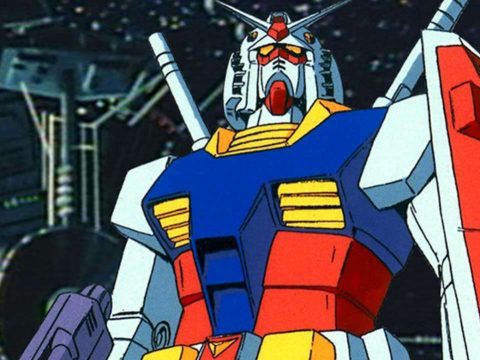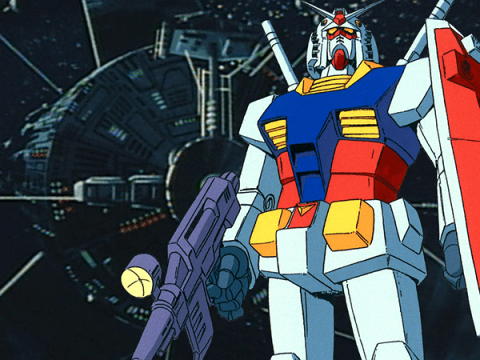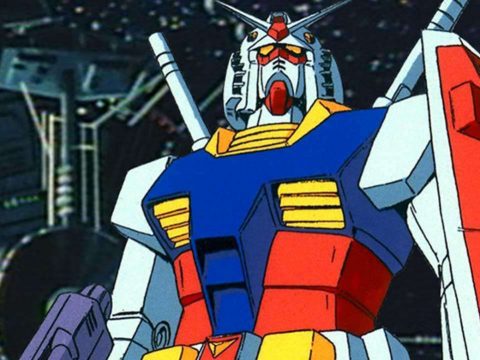
Robot Rumpus!
The streaming anime service HIDIVE continues to expand its selections, not just for simulcasts and much of the Sentai Filmworks catalogue but also older, somewhat forgotten classics that would have stood little chance of seeing the light of day through other means. Just as was the case with Future Police Urashiman, now we get another 1980s sci-fi anime never legally available in the US until now.
Combat Mecha Xabungle, or Blue Gale Xabungle as it is titled here, is the definition of “limited appeal” among 21st-century otaku. It’s a 50-episode giant robot anime series from 1982 directed by Yoshiyuki Tomino, best known for creating the original Mobile Suit Gundam, but it’s a departure from the vibe that otaku have come to expect from “Tomino anime” by now. Not only is it mostly comedic with a fairly low body count, it’s more or less coherent! Why, you can quickly understand why people do the things that they do, who is fighting one another, and why they are doing so! I mainly attribute this to the fact that Tomino didn’t write the actual scripts.
Xabungle is set in another world that resembles the old American Wild West, ONLY WITH ROBOTS. The law is virtually nonexistent, but there is one rule that nearly everyone abides by: you have three days to retaliate against any wrongdoing inflicted upon you, after which the perpetrator should be let off scot-free. How very Bethesda Fallout game of them! That concept doesn’t make any sense to our hero, young Jiron Amos, who seeks retribution upon the man who murdered his parents no matter how much time passes.
His initial plan: steal a Walker Machine robot from the local bazaar and use it to get his revenge. The one he grabs is a combining blue machine model known as the Xabungle, which he manages with the help of a band of misfit outlaw kids called the Sand Rats as well as Elchi, self-proclaimed patron of culture and daughter of the local cargo transporter, who in true Yoshiyuki Tomino fashion has a name most appropriate to his lot in life: Carrying Cargo. Silly names abound, but my favorites in the series are the most objectionable translations ever conceived in the year 2017, the duo of Dyke and Chill. I guess Yoshiyuki Tomino couldn’t QUITE predict Netflix 35 years ago? Of course, every criminal transgression leads to someone coming after someone else within a three-day period, the resolution of which invariably leads to additional transgressions.
Aside from the Wild West aesthetic that extends not only to the locations but also the character archetypes—the recurring antagonist is a black hat-wearing, cigarillo-chomping, amoral  high plains drifter of a gunslinger playing all sides against one another … IN A ROBOT—the real thing that sets Xabungle apart from so many other giant robot anime is how everybody is just constantly SCREWING UP at EVERYTHING.
high plains drifter of a gunslinger playing all sides against one another … IN A ROBOT—the real thing that sets Xabungle apart from so many other giant robot anime is how everybody is just constantly SCREWING UP at EVERYTHING.
Weapons fumble, pilots are out of position for what would’ve been a cool robot transformation, equipment breaks down. All this extra flailing about makes for much more vibrant animation and cartoony movements than the usual robot fare, which combined with all the bickering, stupidity, and relative lack of death makes Xabungle a more easygoing and fun watch compared to virtually everything Tomino did afterward, with the possible exception of Double Zeta Gundam. These aren’t trained soldiers, and for all the Walker Machines about, the only ones capable of manufacturing the technology are the mysterious Innocent, who live in domes that almost nobody dares to attack. You can already tell why I had to say “almost.”
I’d always wanted to see Xabungle because it marks an early collaboration between Yoshiyuki Tomino and future G Gundam and Giant Robo director Yasuhiro Imagawa, who directed several episodes. Now I finally can, one episode a week, the way shows like this are best viewed. As the opening animation consisting of children heroically brandishing realistic guns demonstrates, they sure don’t make ‘em like this anymore.
Studio/company: HIDIVE
available: Now
rating: Not Rated
This story appears in the February 2018 issue of Otaku USA Magazine. Click here to get a print copy.







